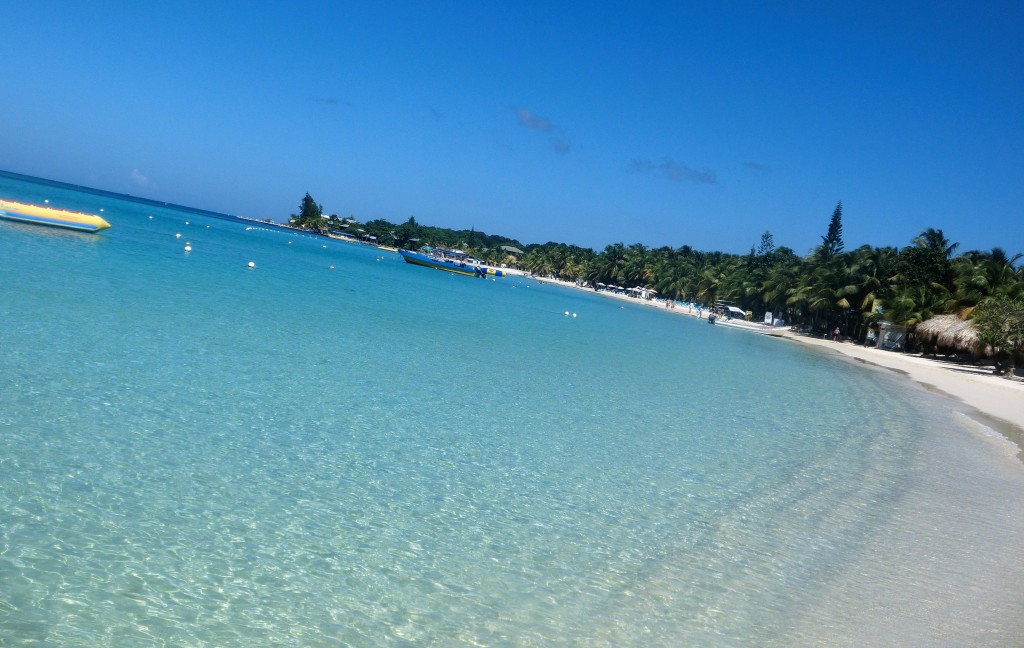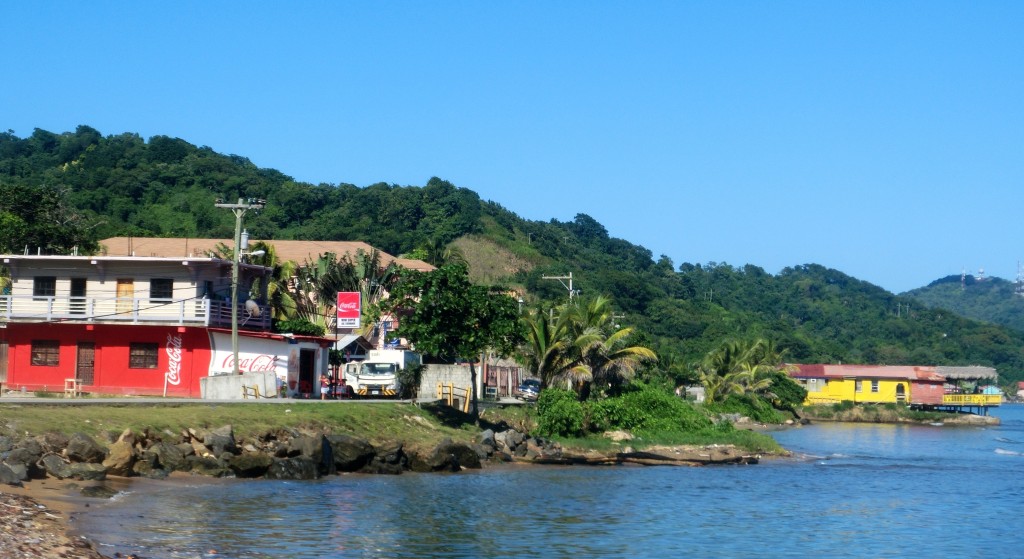TEGUCIGALPA — I spent part of my weekend here in Honduras on a day trip to Roatán, the largest and the most well-known on Honduras’s Islas de la Bahía (Bay Islands).![]()
The Bay Islands are so far afield from the Honduran mainland — culturally, topographically, politically, economically — that it’s perhaps difficult to weave them seamlessly into a greater narrative about Honduran politics. At minimum, it was a Saturday well spent at the beach reading about the history of labor, politics and business in La Ceiba, Trujillo and San Pedro Sula along Honduras’s North Coast, which developed a separate elite around bananas. That’s separate from the history of southern Honduras, including the capital, Tegucigalpa, that developed a more conservative elite centered around mining silver.
As one of the 18 departments that comprise Honduras, the Bay Islands are a political discrete region. But with about 50,000 residents, the Bay Islands are the least populous of the country’s 18 departments. Francisco Morazán, the department that includes and surrounds Tegucigalpa, has nearly 1.5 million residents, and Cortés, the department that includes and surrounds San Pedro Sula, has nearly 1.6 million residents. (Together, they constitute about three-eights of Honduras’s population of eight million people.)
But the Bay Islands are different from either of those regions — they perhaps have more in common with the relatively untamed eastern part of Honduras, La Mosquitia. That’s because of the extraordinary English (and then British) influence in both La Mosquitia and the Bay Islands. When you think of the quintessential English pirates (yo ho ho), there’s no place more notorious than the Bay Islands, which was a haven for English pirates throughout the 17th century. Although Christopher Columbus landed in what is today Trujillo on Honduras’s Caribbean coast in 1502 on his fourth and final voyage, and although Hernán Cortés founded the permanent settlement of Trujillo in 1525, the English didn’t give up their interest in Honduras easily.
They formed an alliance with the Moskito kingdom in northern and eastern Honduras (the word ‘Moskito’ refers not to the ubiquitous and disease-ridden insect pest, but to the muskets that the English supplied the locals), and in 1643, the English-Moskito alliance sacked Trujillo, and the British declared Honduras a British protectorate in the 1740s. The tide turned only in the 1780s, when the Spanish regained Trujillo, and only in 1786 did the Anglo-Spanish Convention recognize Spanish sovereignty over the Caribbean coast.
It took even longer for the British to cede the Bay Islands, their long-coveted Honduran stronghold. By the time the British ceded the islands in 1860, Spain no longer controlled Honduras, and Honduras had gone through periods as a part of the Mexican empire and as the most enthusiastic member of the short-lived federation between 1823 and 1838 of the United Provinces of Central America.
Fast-forward to the present day, and it’s still clear that the Bay Islands are quite different from the rest of Honduras.
For one, it’s hands-down the place with the most tourist infrastructure in the entire country (only Copán in western Honduras near the famous Mayan ruins comes close). For another, English and English dialects are more prominent on the Bay Islands than the Spanish language — not unlike Bluefields along the eastern coast of Nicaragua or any of the other predominantly English/British colonies of the Caribbean.
Moreover, while the resort culture may predominate West Bay and West End on Roatán island, in particular, the largest of the Bay Islands, it’s hardly at the same level of development as, say, the ‘Riviera Maya’ that’s best avoided along the Yucatán coast near Cancun, or the other Caribbean resorts too numerous (and ubiquitous) to mention.
What’s clear from a quick ride through Coxen Hole, the largest town on Roatán, or Punta Gorda, the center of Garífuna culture in Honduras, is that despite the tourism revenue, there’s still plenty of underdevelopment on the island. Perhaps it’s too easy to suggest that’s a damning metaphor for Honduras as a whole. The country has the highest Gini coefficient in Central America — at 57, it’s one of the most unequal countries in the world. Everywhere you look in Honduras, it’s hard to escape that much of its wealth and income go to an inordinately small elite, including a largely Palestinian merchant class that includes the country’s wealthiest businessman, Miguel Facaussé.
Even more interesting, however, is the plight of the Garífuna, an ethnic group that emerged in the post-conquest era. When the British faced a slave uprising on the island of Saint Vincent, they promptly shipped around 2,000 black Caribes to Roatán, where they have now remained for the past two centuries, largely centered in Punta Gorda, though the Garífuna have emigrated to Honduras’s main cities and to the United States.
The new movement of activists fueling the Partido Libertad y Refundación (LIBRE, Liberty and Refoundation Party) includes many Garífuna rights activists, as well as other African-descent and indigenous groups. It was in La Mosquitia that forces trained by the US Drug Enforcement Agency killed four innocent civilians in a botched raid in May 2012, and the Honduran government granted title to over 1.6 million acres of land to the Miskitu people only in September after a decades-long struggle. Around 85% of Hondurans are mestizo, and just 3% are Amerindian and just another 4% are Afro-Honduran, so it takes Herculean efforts to effect minority rights. But all of the major indigenous and Afro-Honduran groups face particular issues of identity and nationhood, in some cases leaving them even more susceptible to poverty. The Garífuna number around 50,000 and the Miskitu number around just 40,000. The Lenca, a non-Mayan group concentrated near Choluteca, number around 100,000 as well — it was a Lenca chief, Lempira, who led an indigenous revolt against Spanish settlers in 1537 and 1538 that gives Honduras the name of its currency today. The Ch’orti’ people, who are descendants of the Mayans who once inhabited the great city-state at Copán between AD 400 and 800, number just 25,000.
Garífuna activists in the past have remained split between the two dominant parties in Honduran political life, the conservative Partido Nacional (PN, National Party) and the more centrist Partido Liberal (PL, Liberal Party), neither of which have records that recommend themselves to Garífuna support.
If you look at election results in the Bay Islands, they largely mirror national totals — current president Porfirio Lobo Sosa defeated Liberal candidate Elvin Santos by a margin of 57% to 38% nationally, the same margin that Bay Islanders supported Lobo Sosa over Santos. I’ll be very interested to know whether that changes in the 2013 election, and whether indigenous populations flock to LIBRE presidential candidate Xiomara Castro de Zelaya in truly mobilizing fashion.


One thought on “Personal reflections on Roatán, the Bay Islands and the Garífuna”